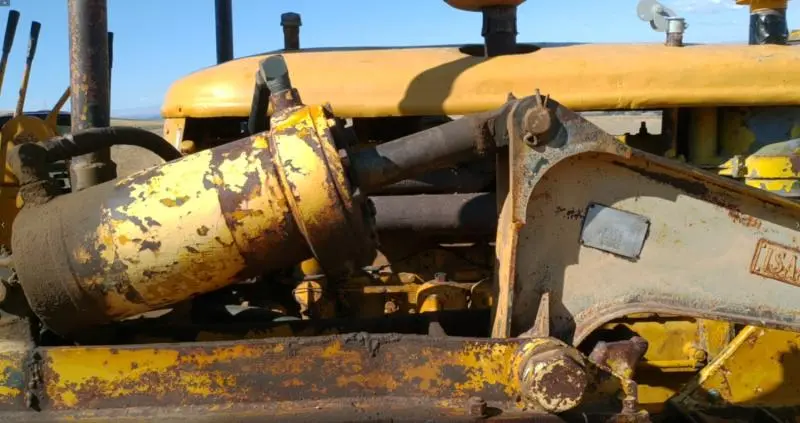Usually some numbers etc stamped in the old hose but if you can't see that, saw it in two and count layers of wire reinforcing. That will tell you a lot.
Are the hose ends crimped on or does it have reusable/field install clamps?
Most old hydraulics operated at less than 1500 psi and as such required large diameter cylinders compared to more modern designs.
Sometimes a cylinder that leaks around the rod simply needs the gland tightened. It was common to use a stack of "chevron" packing rings or even rope packing that was adjustable.
Pictures would help
While we are on this subject, Is there a supplier of the old style hose that uses the original clamp-on hose endings? My D4 6U has some pretty tired looking hoses and I think that I had read that the hose is a bit different I.D. than modern hose. I would like to change them all out this winter. Thanks, Grant.
Grant J how dare you :der::confused2::doh:😉 are society runs on use it and pitch it.
Since places like Surplus Center have a lot of reusable clamp on fittings listed. I would think all hydraulic supply houses have access but they always sell the crimp on ones first.
But if you have the ends just buy hose and do it yourself.
Several tips for working with hose,a small angle head grinder is very helpful. The thin cut off wheel to cut hose and cutting the wire to make it easy to get old hose off the fitting. Then use a wire wheel to shine the old fittings barb end to make putting new hose on easier. Heating hose sometimes helps slip it on, with a little lube. Once fitting is started I have resorted to a block of wood and a hammer get the fitting fully seated in hose. Not high tech work, more muscle than brain. But not that much muscle,because I did one not long ago and my muscle seems to have retired.😆
Usually some numbers etc stamped in the old hose but if you can't see that, saw it in two and count layers of wire reinforcing. That will tell you a lot.
Are the hose ends crimped on or does it have reusable/field install clamps?
Most old hydraulics operated at less than 1500 psi and as such required large diameter cylinders compared to more modern designs.
Sometimes a cylinder that leaks around the rod simply needs the gland tightened. It was common to use a stack of "chevron" packing rings or even rope packing that was adjustable.
Pictures would help

[quote="ccjersey"]Usually some numbers etc stamped in the old hose but if you can't see that, saw it in two and count layers of wire reinforcing. That will tell you a lot.
Are the hose ends crimped on or does it have reusable/field install clamps?
Most old hydraulics operated at less than 1500 psi and as such required large diameter cylinders compared to more modern designs.
Sometimes a cylinder that leaks around the rod simply needs the gland tightened. It was common to use a stack of "chevron" packing rings or even rope packing that was adjustable.
Pictures would help[/quote]
This is the best I can do for my hydraulic cylinders for now. I can probably get a few more angles on the cylinders, the photo I grabbed from a video I took of my tractor and I happened to get some decent views of the cylinders.
[attachment=56230]HydraulicCylS.jpg[/attachment]
I think I may have found a place online to get hoses. If the PSI is only around 1500, most hoses I see are at least double that. I don't really want to go slicing up my hoses unless I have something to replace them with. And yes, I believe these are crimped.
The one that is shown well in the picture is whats known as AEROQUIP hose. Those ends are reusable with knowledge of how to do them. The new stuff will be a bright blue to go with the cat yellow. If you clean the flats well there will be a number on it. That is the size in 1/16ths if I remember correctly. Give a supplier that number and they will get you the right size hose. I would just put regular hydraulic crimp style hoses on it if it was mine though.
Okay, I went up to my tractor and looked for numbers. On the connectors they have the number R2-12. On top of one of the female connectors where you tighten it onto the male connector it has the letters JIC imprinted on one of the sides. One of the other connectors appears to have the number R2T-12. The size of the female connectors appears to fit a wrench I have that according to my tape measure is probably 1-1/4 inch. None of the actual hoses, the rubber, appears to have any identifying numbers on them whatsoever.
I will post pictures later of the numbers if necessary.